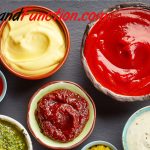Introduction: Why Gut Healing Foods Matter
Gut healing foods play a crucial role in restoring digestive balance, supporting immunity, and enhancing mental well-being. The gut—often called the “second brain”—is home to trillions of microbes that influence everything from nutrient absorption to mood regulation. A damaged gut lining or an imbalance of gut bacteria (dysbiosis) can cause bloating, fatigue, inflammation, and even chronic illness.
Fortunately, the right gut healing foods can help repair the intestinal barrier, nurture beneficial bacteria, and reduce inflammation. In this article, we’ll explore 7 powerful gut healing foods proven by science to promote optimal digestive health and overall vitality.
1. Bone Broth: The Ancient Elixir for Gut Repair
Bone broth is one of the oldest and most effective gut healing foods. Made by simmering bones and connective tissue for hours, it releases gelatin, collagen, and amino acids like glycine and glutamine—all vital for gut lining repair.
How it helps:
Collagen supports the intestinal wall, preventing “leaky gut,” where toxins and undigested particles seep into the bloodstream. Glutamine nourishes enterocytes (gut cells), aiding regeneration.
Tip: Use grass-fed beef or organic chicken bones for maximum nutrients, and simmer for at least 12 hours to extract the minerals fully.
Best paired with: Warm vegetables or soups for a soothing digestive boost.
2. Fermented Foods: Nature’s Probiotic Powerhouse
Fermented foods such as yogurt, kefir, sauerkraut, kimchi, and miso are rich in beneficial bacteria (probiotics) that restore balance in the gut microbiome. These living cultures help crowd out harmful bacteria, improve digestion, and support immune function.
Scientific insight:
A study published in Frontiers in Microbiology found that fermented foods increase microbial diversity and help reduce inflammation in the digestive tract.
How to use:
Add a few tablespoons of sauerkraut to your lunch or have kefir as a morning drink. Start small if you’re new to fermentation—too much too soon can cause bloating.
3. Ginger: The Soothing Root of Digestive Health
Ginger is a centuries-old remedy for nausea, indigestion, and inflammation, making it a key player among gut healing foods. It stimulates gastric juices, enhances nutrient absorption, and helps regulate motility (the movement of food through the digestive system).
Research-backed benefits:
Studies show that ginger reduces intestinal inflammation and supports healthy gut flora. It’s also known to reduce the symptoms of IBS (Irritable Bowel Syndrome).
How to use:
Drink fresh ginger tea, add grated ginger to soups or stir-fries, or use ginger powder in smoothies.
4. Garlic: The Natural Prebiotic and Antimicrobial
Garlic is not only a flavorful ingredient—it’s also a potent prebiotic and antimicrobial food that feeds good bacteria while suppressing harmful strains. The compound allicin helps prevent overgrowth of pathogens like Candida and E. coli.
How it helps the gut:
By promoting beneficial bacteria such as Lactobacillus and Bifidobacteria, garlic enhances digestion and immune resilience.
Tip:
Crush raw garlic and let it sit for 10 minutes before cooking to maximize its allicin potency. Those sensitive to raw garlic can take aged garlic supplements.
5. Leafy Greens: Fiber-Rich Gut Guardians
Leafy greens such as spinach, kale, and Swiss chard are gut healing foods packed with fiber, chlorophyll, and polyphenols. These nutrients feed good bacteria, support bowel regularity, and reduce oxidative stress in the gut.
Science spotlight:
A study in Nature Chemical Biology identified a sugar molecule called sulfoquinovose (SQ) in leafy greens that fuels beneficial gut microbes and enhances microbial balance.
How to use:
Add greens to smoothies, salads, or soups daily. Lightly steaming helps preserve nutrients while aiding digestibility.
6. Chia Seeds: The Fiber and Omega-3 Hero
Chia seeds are small but mighty when it comes to gut health. Their soluble fiber forms a gel-like consistency in the intestines, aiding in bowel movement regulation and toxin removal. They’re also rich in omega-3 fatty acids, which reduce inflammation in the digestive tract.
Why they work:
Fiber acts as a prebiotic, feeding healthy bacteria, while omega-3s strengthen the intestinal barrier and reduce leaky gut symptoms.
How to use:
Mix one tablespoon of chia seeds in water or plant-based milk and let sit for 10 minutes to form a pudding. Consume daily for best results.
7. Turmeric: The Golden Spice of Gut Healing
Turmeric is a powerful anti-inflammatory root containing curcumin, known for its ability to soothe gut irritation and promote a healthy microbiome. It also enhances bile production, which aids fat digestion.
Scientific support:
Research published in The Journal of Clinical Medicine highlights curcumin’s ability to modulate gut bacteria and improve intestinal barrier function.
Pro tip:
Combine turmeric with black pepper to increase curcumin absorption. Add it to curries, smoothies, or warm golden milk.
How to Combine Gut Healing Foods for Maximum Effect
To achieve the best digestive results, combine these gut healing foods daily. For instance, start your morning with ginger tea, include leafy greens in lunch, and have fermented foods or bone broth with dinner.
A well-rounded approach that includes probiotics (from fermented foods), prebiotics (from garlic and greens), and anti-inflammatories (from turmeric and ginger) supports a balanced, resilient gut ecosystem.
Avoid processed foods, refined sugar, and excessive alcohol—they harm gut flora and slow healing. Instead, focus on whole, unprocessed, and fiber-rich foods.
Lifestyle Tips to Enhance Gut Healing
Gut healing isn’t just about food—it’s also about lifestyle. Here are key habits that amplify the effects of gut healing foods:
-
Chew slowly: Digestion begins in the mouth.
-
Stay hydrated: Water helps maintain mucosal integrity in the gut.
-
Manage stress: Chronic stress disrupts gut bacteria balance.
-
Exercise regularly: Movement enhances gut motility and microbial diversity.
-
Sleep well: Poor sleep increases inflammation and disrupts digestion.
By pairing these habits with gut healing foods, you create a strong foundation for long-term digestive and overall health.
Conclusion: Nourish Your Gut, Nourish Your Life
The gut is the foundation of your health—physically, mentally, and emotionally. By incorporating these 7 gut healing foods—bone broth, fermented foods, ginger, garlic, leafy greens, chia seeds, and turmeric—you can naturally rebuild your digestive strength, improve immunity, and feel more energized.
Healing your gut takes consistency, patience, and mindful eating. With every nourishing bite, you support not just your stomach, but your entire system—from your brain to your immune response.







